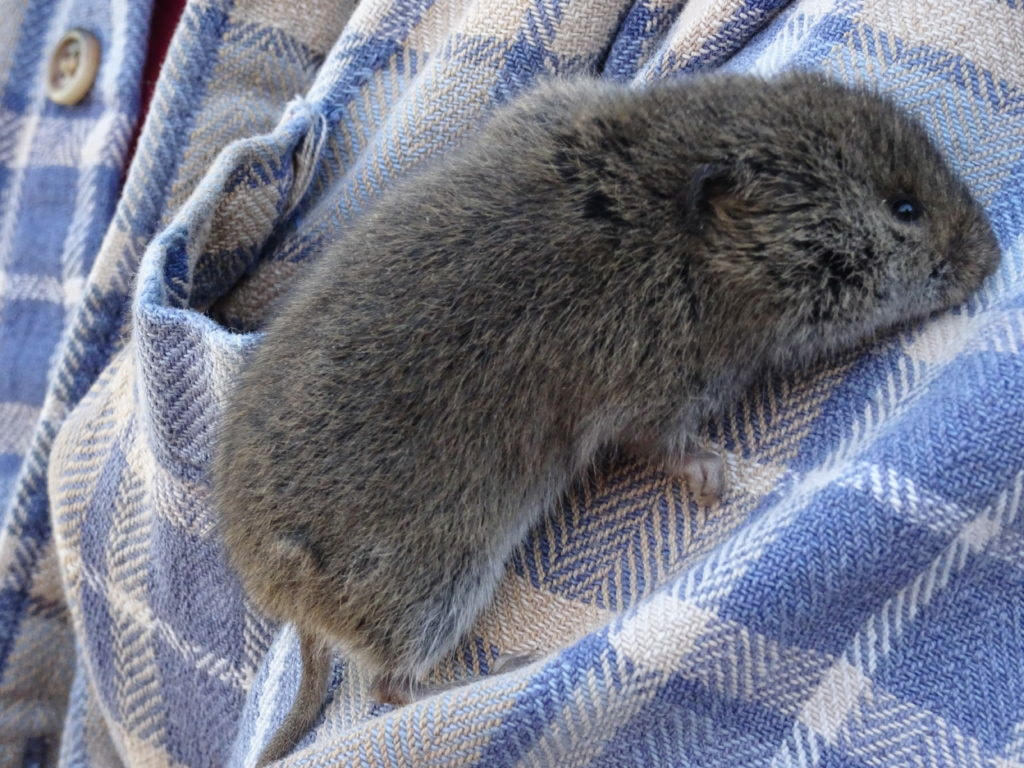Vole Control Strategies: Preserving Your Yard's Beauty
Wiki Article
Mastering Vole Pest Control: Thorough Insights on Invasion Prevention and Treatment Strategies
By identifying the subtle indications of vole invasion early on, we can take aggressive measures to protect against extensive damages. In this conversation, we will check out the subtleties of vole habits, dig right into the recognition of infestation indicators, and discover the most efficient prevention and treatment techniques.Recognizing Vole Behavior
Taking a look at the foraging patterns of voles supplies beneficial understandings right into their actions and environment choices. Voles, little rats appearing like computer mice, are herbivores recognized for their underground tunneling activities. By observing their foraging behavior, researchers can gain a better understanding of where voles favor to develop their environments and the level of their ecological effect. Voles are respected dog breeders, with a solitary women qualified of producing a number of clutters in a year, making it important to understand their behavior for reliable pest control methods.
Study suggests that voles display selective feeding routines, favoring tubers, seeds, and origins - vole lawn damage. This dietary choice influences their foraging patterns, leading them to locations abundant in plant life and ground cover. Furthermore, voles are known to develop fancy passage systems for foraging and nesting objectives, suggesting a high degree of versatility to their environments
Comprehending vole habits is essential for applying targeted insect control actions that disrupt their environment choices and foraging activities. By researching their behavior, specialists can develop extra reliable prevention and therapy strategies to handle vole infestations.
Identifying Signs of Vole Invasion
Vole problems can be found by recognizing particular indicators of their presence in an area. Among one of the most typical indicators of a vole problem is the presence of surface paths. Voles develop networks of narrow pathways on the ground that are usually around two inches broad. These paths are often located in grassy locations or under mulch or ground cover where voles can move openly and look for food.One more crucial indication of vole problem is the visibility of tiny burrow openings in the ground. In addition, voles are recognized to leave behind eaten plant stems, roots, and light bulbs near their burrow openings, showing their feeding task in the area.
Moreover, vole droppings can likewise represent their existence (vole yard damage). Vole droppings are small, brownish, and cylindrical fit, resembling grains of rice. Finding these droppings along paths or near burrow openings can verify a vole invasion. By being attentive for these indicators, homeowner can quickly address vole infestations and prevent more damages.
Executing Proactive Avoidance Steps
To properly reduce the risks associated with vole invasions, property owners can proactively implement a variety of precautionary actions intended at protecting their landscapes and gardens. In addition, maintaining yard locations clean and lessening mess where voles can conceal or nest is vital in minimizing their visibility.Furthermore, utilizing natural vole deterrents like castor oil-based repellents or predator urine can serve as efficient safety nets. It is additionally suggested to routinely evaluate outdoor rooms for any kind of indicators of vole task, such as paths or tunnel openings, to attend to prospective problems immediately. vole pest control By adopting these aggressive avoidance approaches, homeowner can dramatically lower the chance of vole damages and keep the health and visual appeals of their landscapes.
Efficient Treatment Methods
Integrating targeted trapping techniques and using approved rodenticides are vital components of effective therapy approaches for taking care of vole invasions. Capturing can be a reliable means to lower vole populations, particularly when put strategically in their active runways. Break traps and live traps can both be efficient, with the last permitting the capture and relocation of voles. When making use of rodenticides, it is essential to comply with safety guidelines to stop harm to non-target pets and family pets. Location rodenticides in secure lure terminals to decrease risks to unexpected targets. In addition, habitat alteration, such as reducing ground cover and getting rid of sources of food, can aid hinder voles from infesting an area. Regular surveillance and maintenance are likewise vital facets of effective treatment strategies to guarantee that vole populations are maintained under control. By integrating trapping, rodenticides, environment modification, and constant monitoring, effective vole insect control can be accomplished.
Monitoring and Maintenance Tips
Regular surveillance enables for the early detection of vole activity, allowing prompt treatment prior to invasions worsen. To effectively check vole populations, strategically positioned catches can be made use of in vole paths or near burrow entrances.In addition, preserving a well-kept and neat landscape is important in vole avoidance. Clearing away particles, such as stacks of timber or thick vegetation, gets rid of possible vole habitats. Routinely trimming and trimming lawns plants assists minimize vole concealing spots and decreases their access to food resources.

Verdict
To conclude, grasping vole bug control needs a solid understanding of vole behavior, the ability to recognize indicators of infestation, implementing proactive prevention steps, effective therapy approaches, and constant tracking and maintenance. By taking a thorough technique to vole control, people can successfully take care of and prevent problems, ultimately shielding their residential property and surrounding atmosphere from damages triggered by these little rats.In this discussion, we will explore the subtleties of vole behavior, dive right into the recognition of infestation indications, and discover the most efficient avoidance and treatment approaches.Integrating targeted trapping approaches and utilizing approved rodenticides are essential parts of effective therapy techniques for taking care of vole invasions. To properly monitor vole populaces, tactically placed traps can be used in vole paths or near burrow entryways. Evaluating and repairing any kind of damages to these frameworks makes sure that vole control continues to be efficient in securing residential or commercial properties from problems. By incorporating these tracking and upkeep practices into a comprehensive vole bug control plan, individuals can successfully handle vole populations and secure their residential or commercial properties from damages.
Report this wiki page